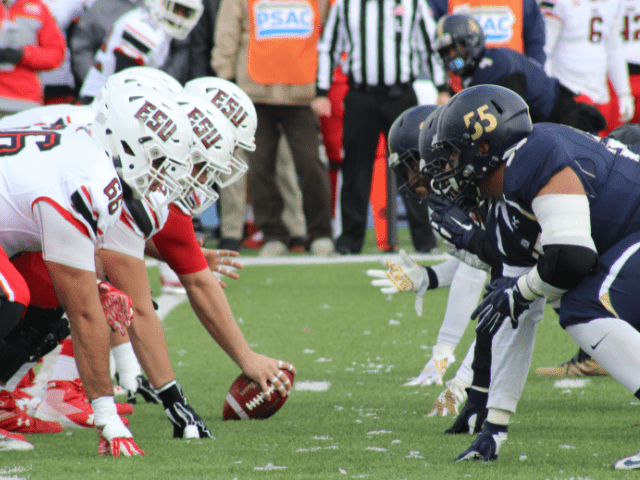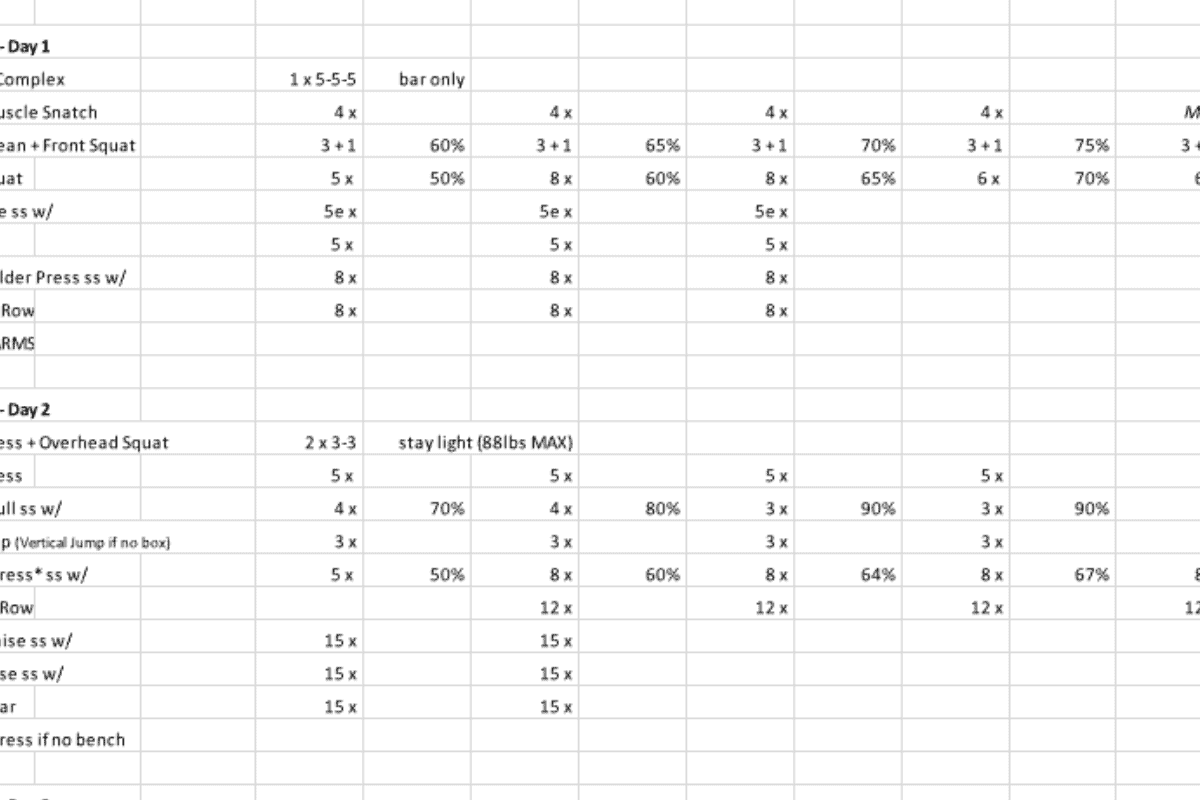How To Write a Strength & Conditioning Program (Pre-Plan)
Writing your first Strength and Conditioning Program is one of the most exciting rites of passage as a Strength and Conditioning Coach. You’ve been learning Squatting Progressions, Agility Drills and Shoulder Mobility Exercises. It feels like you have so much knowledge that you can’t wait to put it all on paper.
However, once you find yourself staring at a blank piece of paper (or more likely a computer screen if you’re not super old school) it can be pretty intimidating where to start.
Should you start designing the warmup first and then go in order for each day? Should the lifts be written first and then the running or vice versa? Mesocycle and then Microcycles?
All good questions and this is why I’m writing this guide. It’s the first in a series of How to Write a Strength and Conditioning Program that I hope can help young coaches going through the process for the first time.
The First Thing to Do When Writing a Strength Program
The answer is actually none of those things I mentioned above.
So, what should you do first?
The first thing you should do when writing a Strength and Conditioning Program is do an evaluation of your team. What are the demands of the Sport? What are the strengths and weaknesses of your current roster? Do you have a younger team that needs more foundational work or an older team that is ready for more advanced concepts?
In this article, I’m going to not just go over the first thing you should do when writing a Strength and Conditioning Program, but the first 3 things you should do before you write down your first rep or set.
Sport Demand Analysis

Unless you get really lucky, chances are the first time you’re in charge of writing a Strength and Conditioning Program it won’t be in the sport you actually played. The first program that I ever wrote was for the Tennis team at the University of Tennessee. Prior to writing that program, I had played a combined total of zero minutes of tennis in my entire life.
So, the first thing I had to do was examine the demands of the sport. Over the next week, I talked to all the coaches and watched a lot of tennis. I started to pick up some things.
Tennis is heavily a rotational sport. Serving is really similar to a baseball pitcher throwing a pitch. They do an insane amount of change of direction. Tennis players have to be in unbelievable shape.
I was by no means an expert on tennis after a week, but this helped me to figure out what I needed to emphasize within my program.
I’m not saying you need to go overboard on trying to be “sport-specific”. I still believe you need the basic movements regardless of sport, like pulling, squatting, pressing and pulling.
But, every sport has specific demands that you should be addressing within your program. Whether that’s shoulder prehab, extra rotational core work or whatever you feel is going to help your athletes perform better in their sport – it needs to be in your program.
As an extra side benefit, it will help with buy-in from your players. Anytime you can explain to your athletes how a particular drill or exercise is going to directly help a part of their game, it goes a really long way.
Evaluate Your Team

Every team is different. The experience of your players, the amount of time they’ve been in your program and their current levels of strength, speed, flexibility, etc should affect how you write your program.
You always want to make sure your players are in great shape for the start of the season. But, outside of conditioning, the needs of each team along with individual athletes will vary.
A team who is in Year 1 of your training program may need a slower progression on complex movements compared to a team full of athletes who are in years 2, 3 and 4. A senior who can squat over twice their bodyweight should have a different emphasis in their strength program than a freshman who had little to no structured training in high school.
Using a cookie-cutter “one size fits all” program with your entire team each year will severely limit the development of your players and will essentially be doing all of them a disservice.
Before you start putting exercises, sets and reps down on a piece of paper or excel sheet, take some time to go through each player on your roster. What are their strengths? What are their weaknesses? What things would each player benefit from doing the most (or at least more of)?
I highly recommend going through this process with the sport coaches. Get their insight into what they see are the strengths and weaknesses of each player on the team, or at least at their position. I also recommend asking the players themselves. What do they think they need to work on the most to improve on the field (or court)?
Getting all of this feedback before you start your planning will ensure that everyone is on the same page and will help to increase the buy-in to your program from both the other coaches on staff as well as your athletes.
Map Out Your Schedule

Finally, the last thing you should do is figure out your schedule.
I always had my interns write an eight-week “summer” program as part of their internship. I can’t tell you how many blank stares I received when I asked when July 4th was.
It’s one thing to write an eight-week schedule in a hypothetical perfect world. However, in the real world, things like holidays, school schedules, final exams and much more can (and will) interfere with your ‘perfect’ program.
Figure out your real-world schedule before you start plugging in training days. Due to holidays, school or whatever you may end up with 4-day, or even 3-day, training weeks. You may have an open week between weeks 4 and 5 for Spring Break and that may end up affecting when (or if) you want to deload.
These kinds of obstacles make writing a strength and conditioning program more challenging, but figuring out what your obstacles are and how you plan to work around them is critical in creating a successful plan.
Final Thoughts
When writing a strength and conditioning program, especially for the first time, it’s easy to get ahead of yourself and start designing an amazing squat progression.
But, before you start developing your program you need to do the proper amount of pre-planning so you know what your scheduling parameters are and what the needs of your sport and team are. This will help to give you a clear picture on what your program needs to focus on to help your athletes be successful in their sport.

